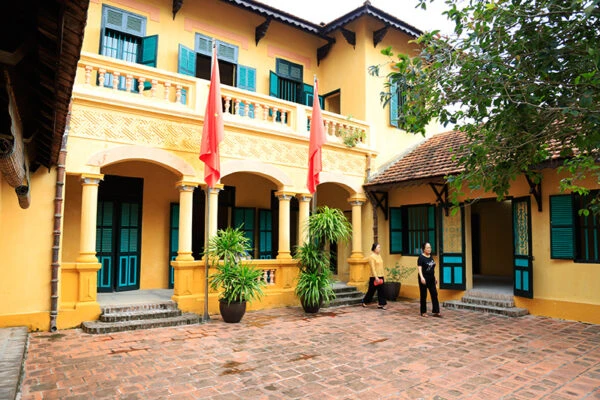The President Ho Chi Minh Memorial House in Van Phuc Silk Village (Ha Dong District, Hanoi) is the historical site where, nearly 80 years ago, President Ho Chi Minh composed the Call for National Resistance.

The house of Nguyen Van Duong in Van Phuc Ward (Ha Dong District, Hanoi), where President Ho Chi Minh wrote the Call for National Resistance in December 1946 (Photo: vtv.vn)
After the success of the August Revolution in 1945, the Democratic Republic of Vietnam was born. However, shortly after, the French colonialists conspired to invade Vietnam once again.
In this critical situation, on December 3, 1946, President Ho Chi Minh secretly came to the house of Nguyen Van Duong in Van Phuc Village (now part of Van Phuc Ward, Ha Dong District) to prepare for a move to the resistance base.
At this house, on December 18 and 19, 1946, President Ho Chi Minh chaired an expanded meeting of the Party Standing Committee, launching the nationwide resistance against the French colonial invasion.
It was also here that he wrote the Call for National Resistance, which was broadcast by the Voice of Vietnam to the entire nation. This marked the beginning of Vietnam’s long resistance war.
President Ho Chi Minh stayed at this house until December 19, 1946, before leaving. Today, the house of Nguyen Van Duong has become the Ho Chi Minh Memorial House.
After nearly 80 years, the house has been preserved by the people of Hanoi. It consists of a two-story main building and two side wings, each with three rooms.
The first floor of the main building displays various photographs and artifacts from the time President Ho Chi Minh lived and worked in Van Phuc.
The second floor retains the original layout and details from the time he stayed and worked there. The artifacts reflect the simple and humble revolutionary life of the great leader Ho Chi Minh.
The two side wings have been restored to exhibit some of the living and production spaces of Nguyen Van Duong’s family, including household items and weaving looms—symbolic artifacts of Van Phuc’s silk-weaving tradition.
The remaining spaces in the two wings are used to welcome visitors, both domestic and international, and to display exhibits about the revolutionary traditions of the Van Phuc Party Committee and its people.
Located at the heart of Van Phuc Silk Village, just about 10 kilometers from Hanoi’s city center, this historical site has become a compelling destination for those interested in Vietnam’s revolutionary history. It is often included in itineraries that explore the thousand-year-old silk village and delve into President Ho Chi Minh’s life and work./.
Compiled by BTA